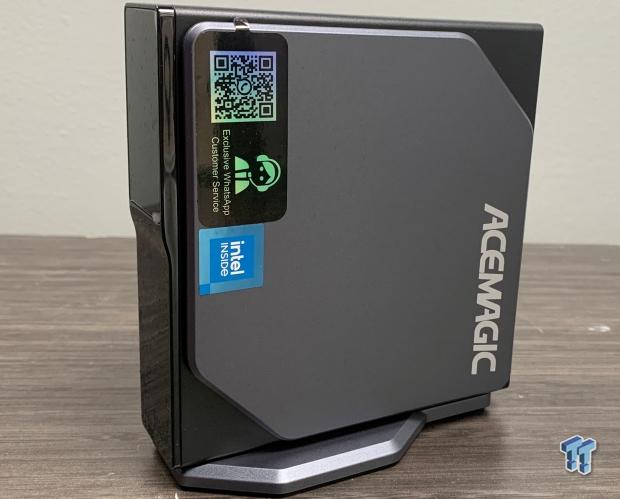The Bottom Line
Pros
- + Design
- + Front screen
Cons
- - Performance
- - Price
- - Subpar connectivity
Should you buy it?
AvoidConsiderShortlistBuyIntroduction, Specifications, and Pricing
Like the NUCBOX N97, which we just finished reviewing, the S1 from Ace Magic has chosen the Alder Lake N series for its platform of choice, but Ace Magic had chosen an entirely different route for their Mini PC, choosing to cater to the entry-level desktop PC market with its unique design and customizable front panel display.
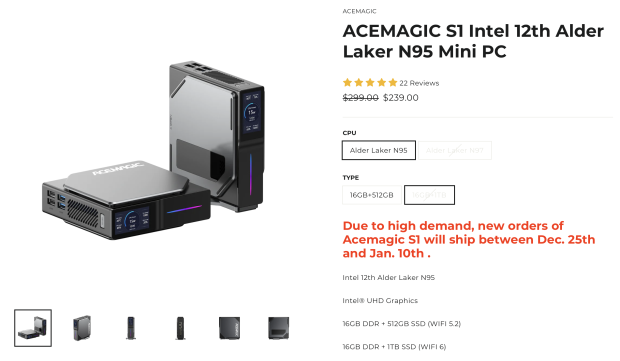
As mentioned, the S1 takes advantage of the Alder Lake N series of CPUs, the N95 being chosen this time. This CPU offers four cores at a base clock of 3.4GHz, 6M of cache, and a 15W TDP. 11th Generation UHD graphics are enabled on this CPU with sixteen execution units at 1200MHz. Memory is a single channel; Ace Magic deployed a 16GB 3200MHz stick via a SO-DIMM slot internally. Storage includes two M.2 slots; the NVMe slot is populated with a 1TB drive, ours being from Biwin, and a secondary slot using M.2 SATA.
Connectivity for the Ace Magic S1 includes two USB 2.0 and two USB 3.2 ports on the side of the unit, along with dual HDMI 2.0, Dual Gigabit LAN, and a 3.5mm Auxiliary port on the rear.
The pricing of the Ace Magic S1 comes in at $239.99.

Overview
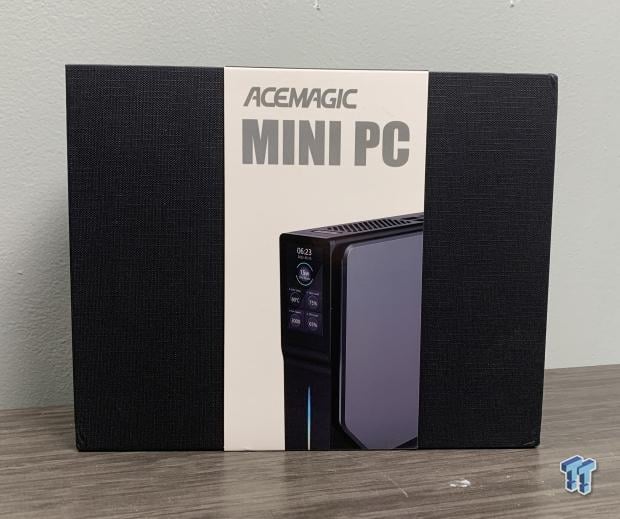
The S1 was delivered in its retail packaging, which includes an image of the S1 itself.
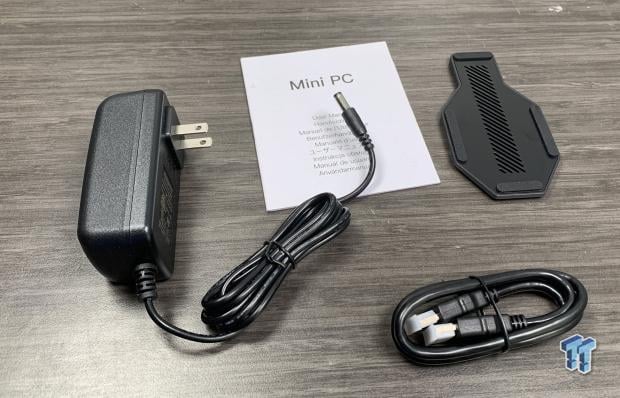
Unboxing, we have the power adapter on the left, HDMI cable, and stand for those wanting to orient this machine vertically.
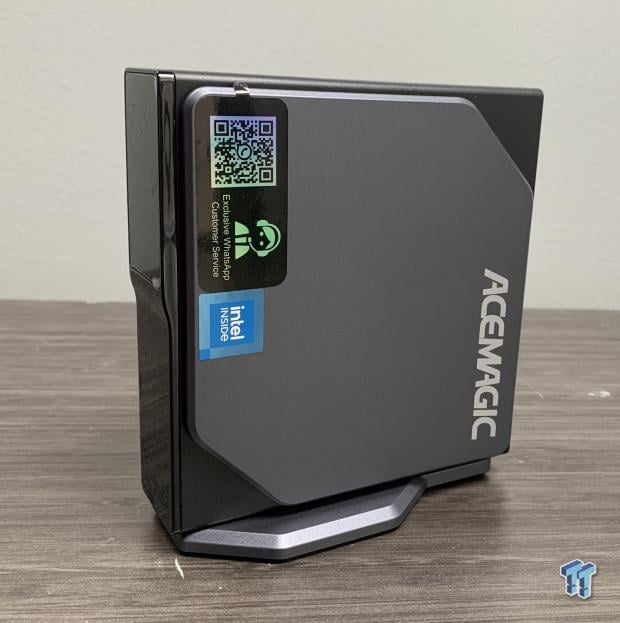
The Ace Magic S1 does use a seemingly standard 4x4 form factor, though slightly thinner.
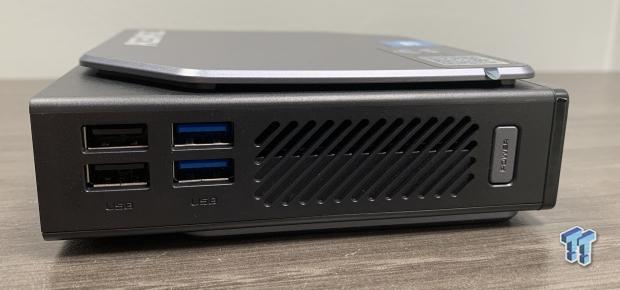
The side of the S1 includes all four USB ports; these are split, with the two blue ports being USB 3.2 and the two black ports being USB 2.0. The power button is also here, far right in the image above.
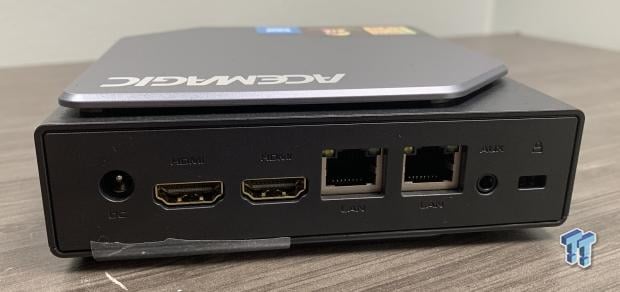
The rear I/O includes power and HDMI ports on the left side, and we have dual gigabit LAN and the Aux port to the right.
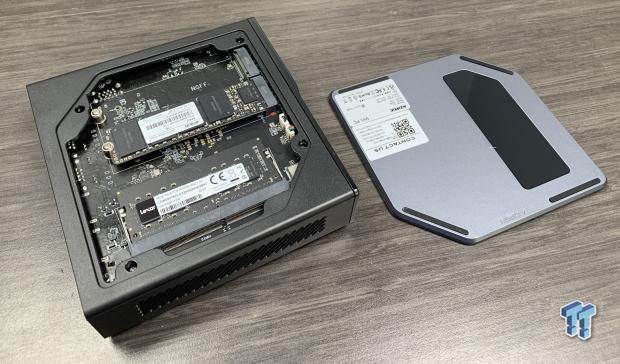
Internally, the S1 has an easily removable side panel that allows access to the M.2 slots and single SO-DIMM.
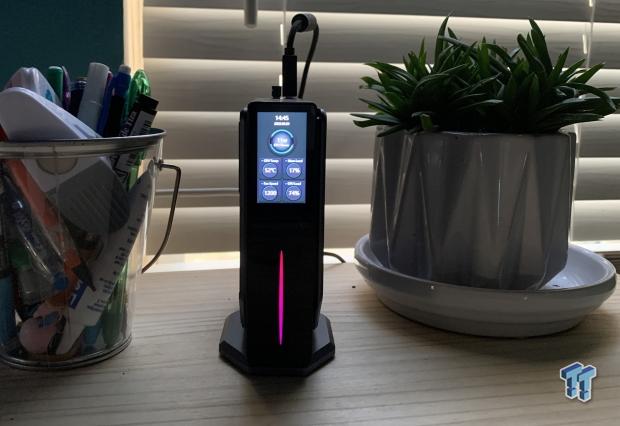
Booting up the S1, you get the small front panel display for system usage and temperatures.
BIOS/UEFI and Software
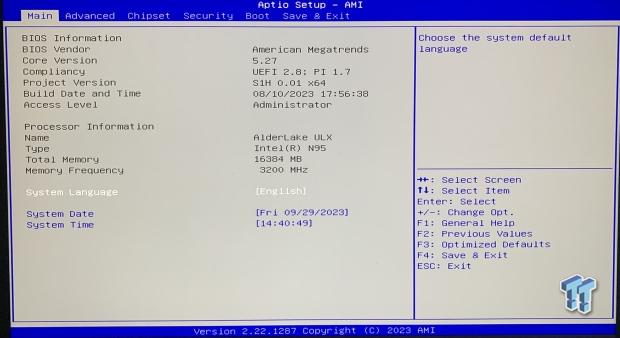
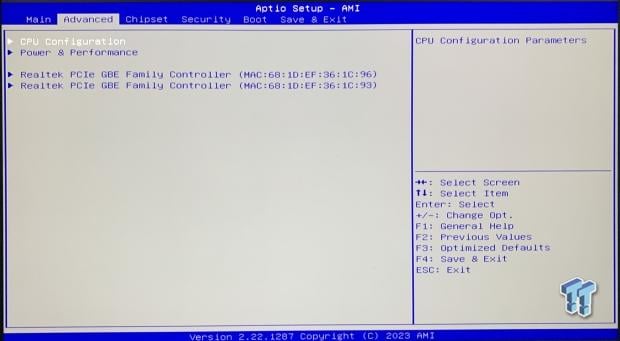
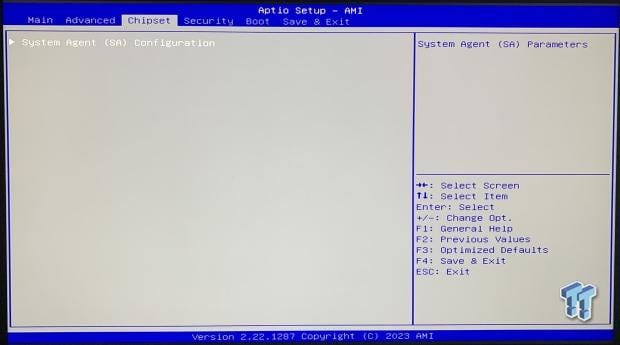
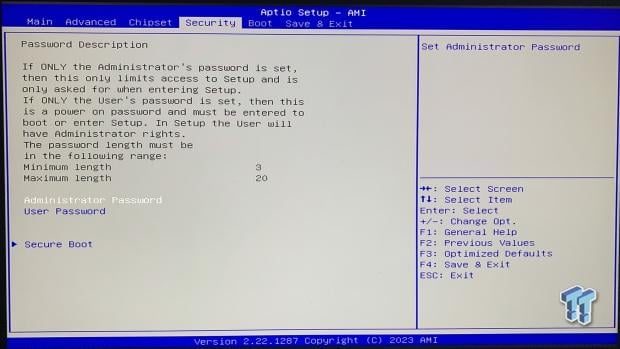
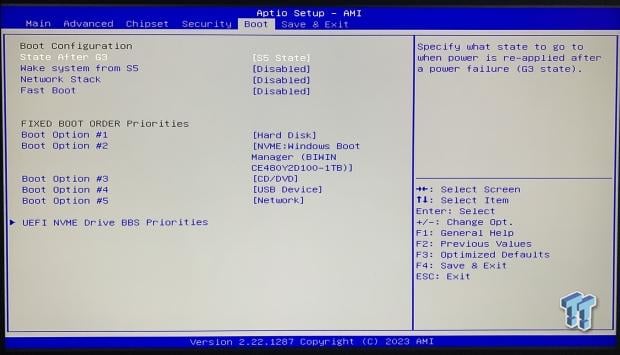
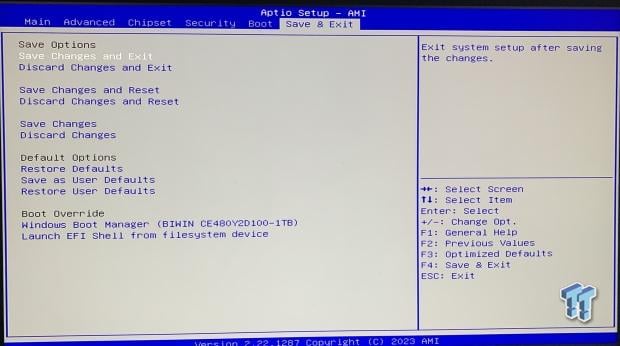
The BIOS for the S1 is the text-based setup. This includes hardware information on the main page; you can set the date and time at the top. The advanced menu includes options for configuring the chipset, CPU, and storage, while near the bottom, there is a utility for updating the BIOS. Further options include a hardware monitor and the usual security and boot tabs.
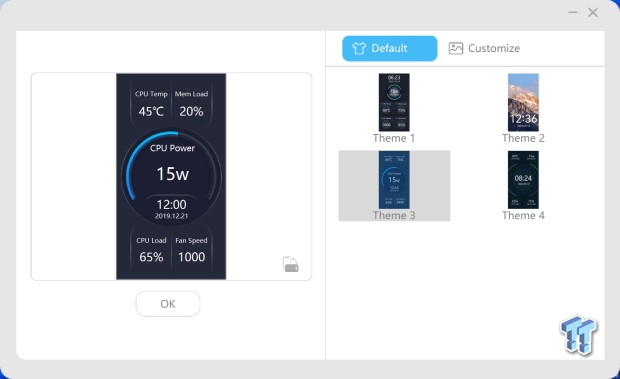
The Ace Magic S1 does offer one piece of software, as seen above. This allows you to customize the front panel display with several preset themes.
System/CPU Benchmarks
Cinebench
Cinebench is a long-standing render benchmark that has been heavily relied upon by both Intel and AMD to highlight their newest platforms during unveils. The benchmark has two tests: a single-core workload utilizing one thread or 1T. There is also a multi-threaded test that uses all threads or nT of a tested CPU.
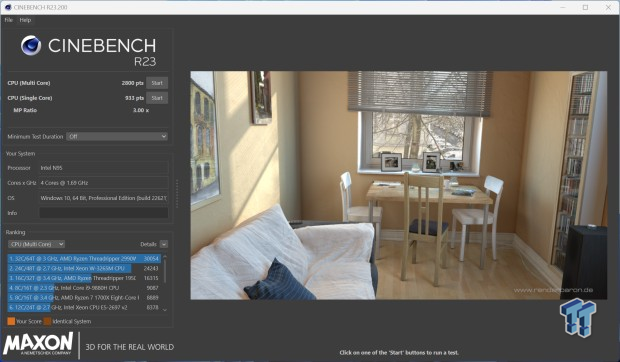
The S1 did perform quite well in R23. We picked up 933 single-core and 2800 multi-core.
BAPCo CrossMark
CrossMark™ is an easy-to-run native cross-platform benchmark that uses real-world application models to measure overall system performance and responsiveness. CrossMark™ supports devices running Windows, iOS, and macOS platforms.
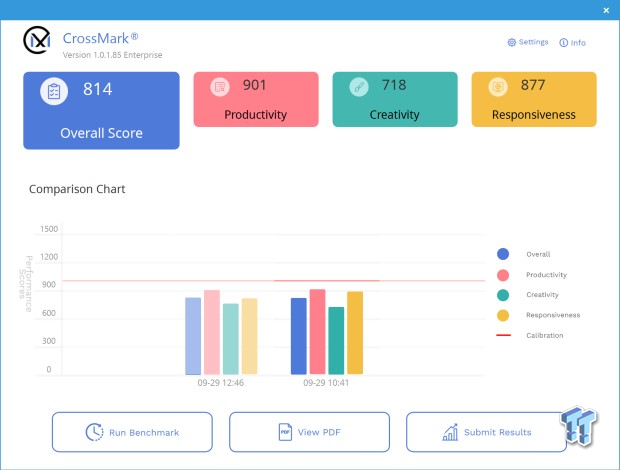
CrossMark landed at 814 overall, with Productivity being quite good for this Mini PC.
Geekbench 6
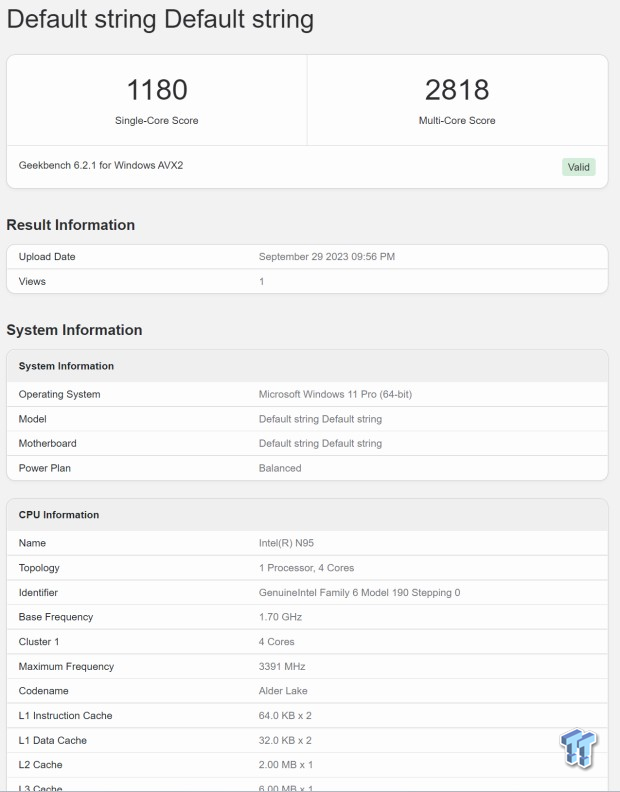
Geekbench landed us a score of 1180 in single-core while multi-core picked up 2818.
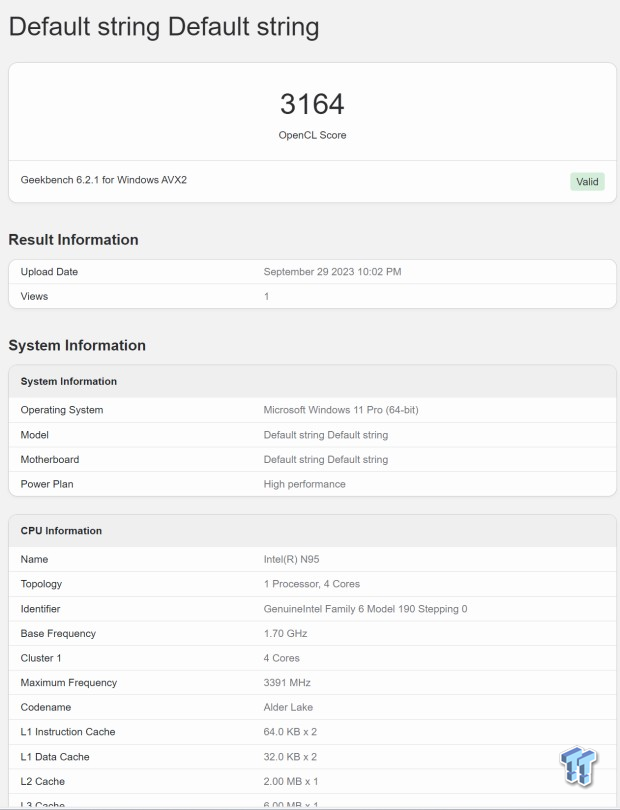
Graphics workloads gave us an OpenCL score of 3164.
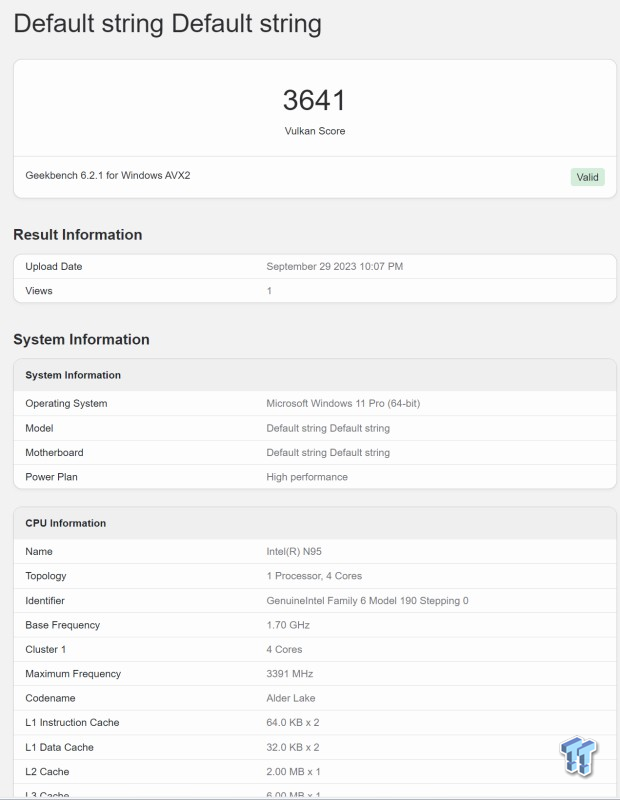
Looking at Vulkan, our score was nearly the same, this time landing at 3641.
Graphics, System I/O, Battery, and Gaming
System I/O Performance
PCMark
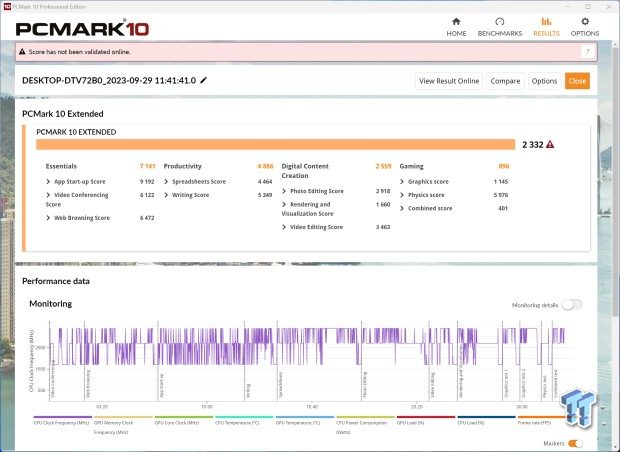
PCMark Extended scored 2332 overall, Essential being the best workload.
3DMark
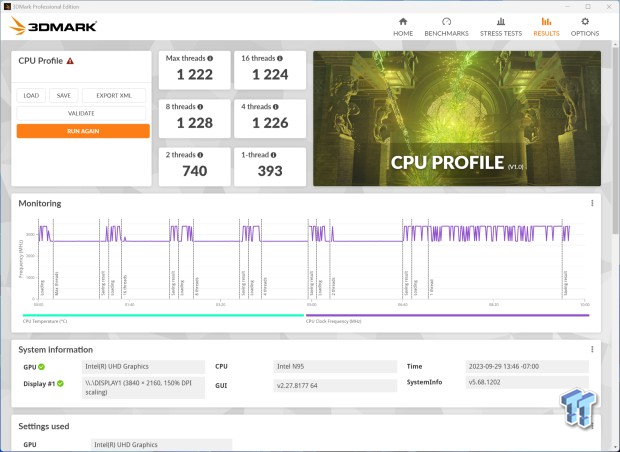
CPU Profile gave us a single thread score of 393, and this ramps up slowly to finish at 1224 at sixteen threads.
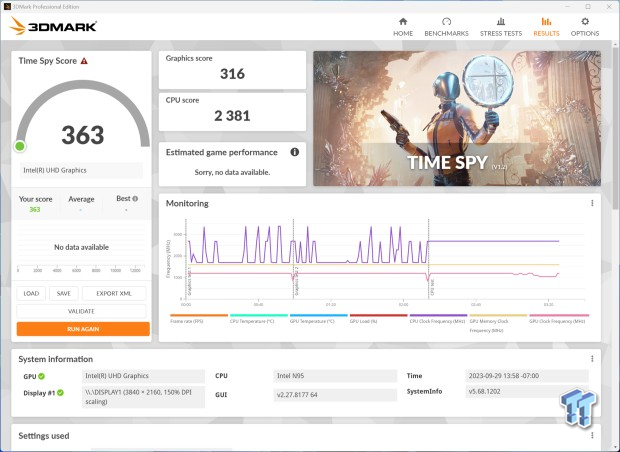
Time Spy is the only gaming workload we ran on the N95 Box. The S1 came away with a score of 363.
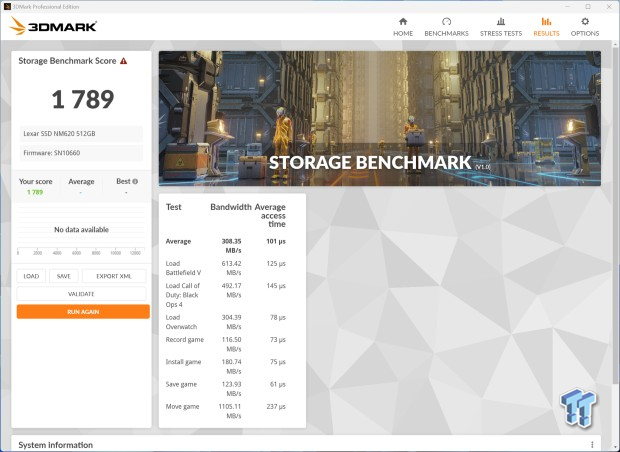
Storage was quite good for the N95 box. The S1 picked up a score of 1789 and bandwidth at 308 MB/s.
Final Thoughts
The Ace Magic S1 is an interesting machine, and as we have seen already, vendors are free to design these for their intended market. That confuses me, as Ace Magic puts many hopes and dreams for this unit on the front-mounted screen and chassis design instead of the hardware itself. I say this because we have already seen what this machine can be with the ASRock NUCBOX N97, even with its low power. Yet, Ace Magic has nearly stripped this unit down to barebones for connectivity, with just two USB 3.2 available. Further, networking is also odd because you must purchase the more expensive 1TB model to get an installed WiFI6 card; 512GB models are stuck with WiFi5.
As we have seen already with the NUCBOX and now the S1, performance is certainly entry-level, but not all is bad. The S1 did manage to pick up better multi-core scores over the N97 from ASRock. R23 showed up with 2800-point nT, while CPU Profile and Geekbench were a touch better with the S1 as well. As expected, gaming is a no-go on this unit, but as a compromise, the Ace Magic S1 offered decent storage performance, scoring nearly 1800 points in 3DMark.
Pricing does not do any favors for the Ace Magic S1. At $239, currently on sale direct from Ace Magic, it is very hard to recommend this machine to anyone as the ASRock NUCBOX N97 is $20 more and offers dual 2.5Gbe, five USB 3.2, two of which are USB-C and supports DisplayPort.

